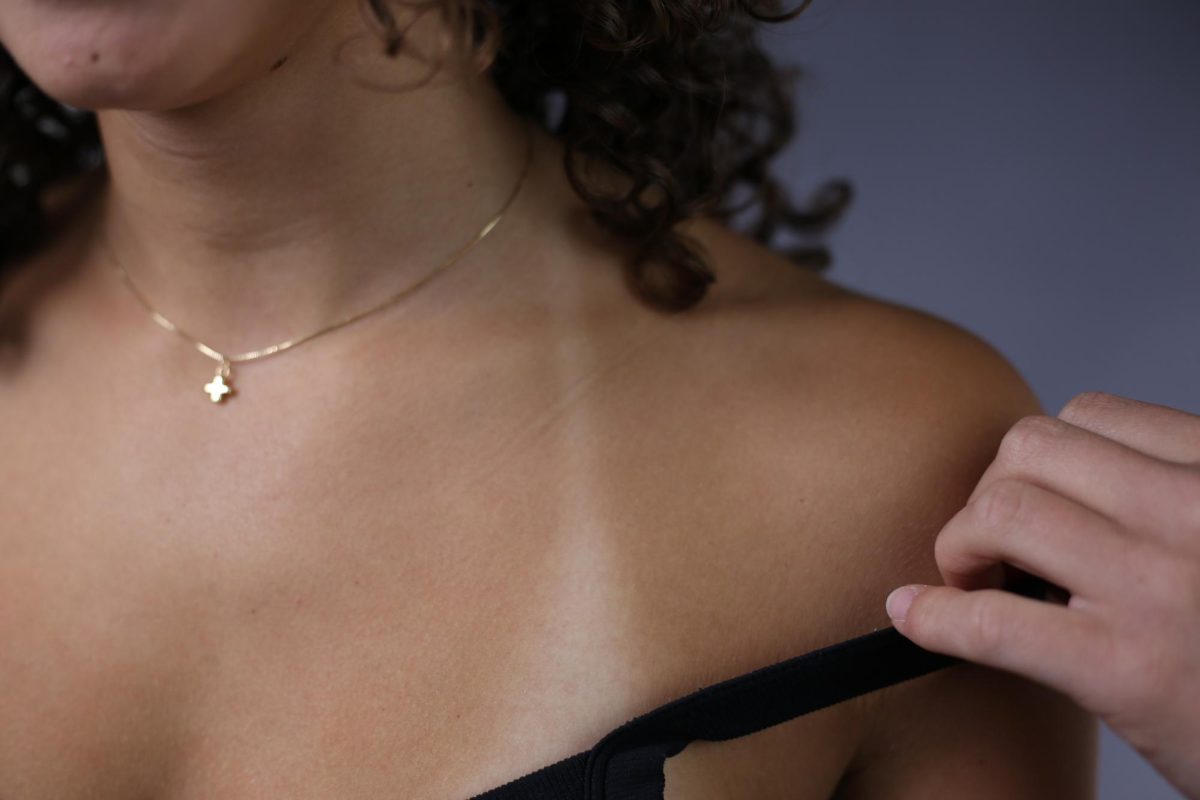This time last year, after checking the UV index on their phones, my teammates rushed to tie on bikinis, basking in the hot sun before practice began. Many found it productive, studying away for their upcoming exams or math quizzes as the rays soaked into their skin. At the time, I couldn’t help but wonder what was really going on. Though I was someone who shared the desire to be outside, I preferred a nice shadowed patch to carry out my tasks. Why risk the potential of a painful burn when you could still enjoy the fresh air in the shade?
I soon found out why — what they sought was a nice golden glow and visible tan lines.
With nearly eight million posts across various platforms, all under the hashtag “tanning,” it’s no surprise that this state is sought after. From promotions of fake tanning products to tips for darker tans, social media has made tanning as popular as ever.
After booming in the 80s and 90s with the emergence of tanning beds, then falling in popularity due to health concerns in the 2000s, tanning has found itself in the spotlight again. Like any other body altering product or strategy, tanning is a method favored to boost one’s body confidence. It’s known for bringing out features, like freckles, that were lost in the cold months of winter, while simultaneously hiding insecurities like acne scars.
At ELHS alone, many responded positively when surveyed by Portrait on how tanning influenced their body image:
“I feel more like myself.”
“It makes me feel prettier.”
“I feel so skinny after.”
This isn’t an issue in itself; the more confidence you have in your appearance, the more power to you. It’s the question of what we’re trying to achieve with this potentially dangerous habit. Are we subconsciously trying to reach an unattainable beauty standard society pushes, under the guise that we should look like the influencers on our feeds?
To me, this tanned appearance seems to just add to an already mountainous pile of unhealthy expectations we teenagers are exposed to.
To gain a greater level of understanding why these feelings may occur, it all may have to do with endorphin release — chemicals that improve one’s mood. UV light is a common perpetrator of this, resulting in a release similar to that of opioid use, which can lead to potentially dependency, or even addiction, to these harmful rays.
That spark of confidence you feel could be a result of more sinister undertones — you may literally be addicted to the sun.
To top it all off, tanning isn’t healthy for you physically either.
While tanning, one simultaneously puts themselves at risk of dangerous skin cancers, according to the Skin Cancer Foundation. This foundation also reports that 80% of skin aging is a result of the sun, contributing to the presence of wrinkles and mysterious spots later down the line.
In an era where sunscreen and anti-aging products are toted everywhere for all to see, the underlying hypocrisy of this is evident.
In hopes to look more “conventionally attractive” while we’re young, we put ourselves in potential jeopardy for when we’re older. Though we can’t resist multi- step skincare regimens to keep us looking youthful, we engage in activities that reverse the effects of these efforts.
Though all those asked by Portrait were aware of these potential risks, some still choose to sacrifice their overall health for the image they wish to achieve.
On the contrary, the desire to tan seems to be a no good web of complexities that I don’t prefer to engage in. I thoroughly enjoy my shady patches and paler skin, and if that means I’m keeping myself safer, I don’t mind bringing more people in.
If you’re looking for a similar endorphin boost, try an activity involving exercise instead. Weightlifting is just one of many ways to find this, but if you’re still craving some sun, a walk or run around town is also a great replacement to fulfill this desire. If you simply enjoy the look of being tan, fake tanning is a much safer alternative to UV rays. But just to be safe, no matter where you are, don’t forget your SPF!










